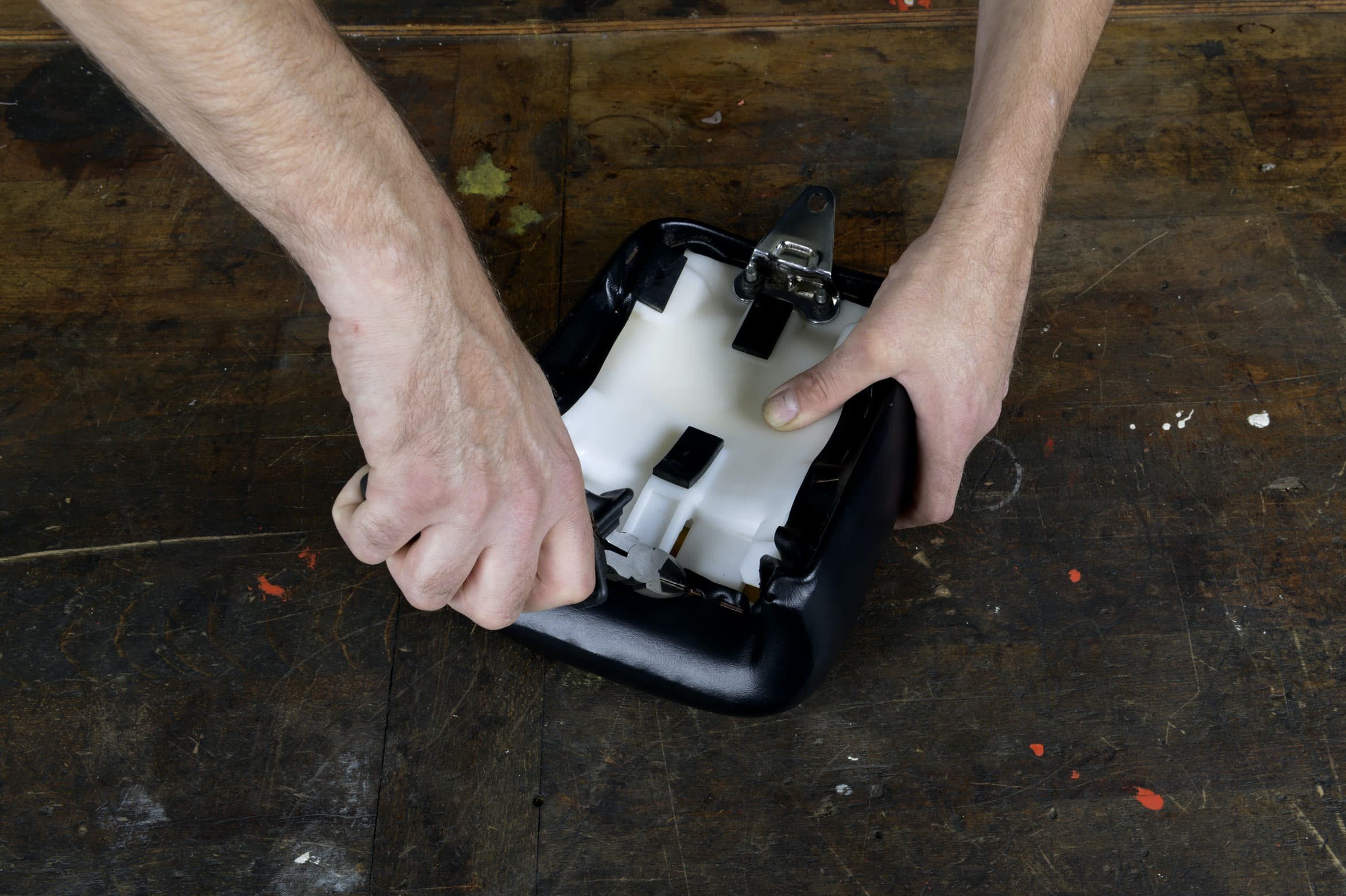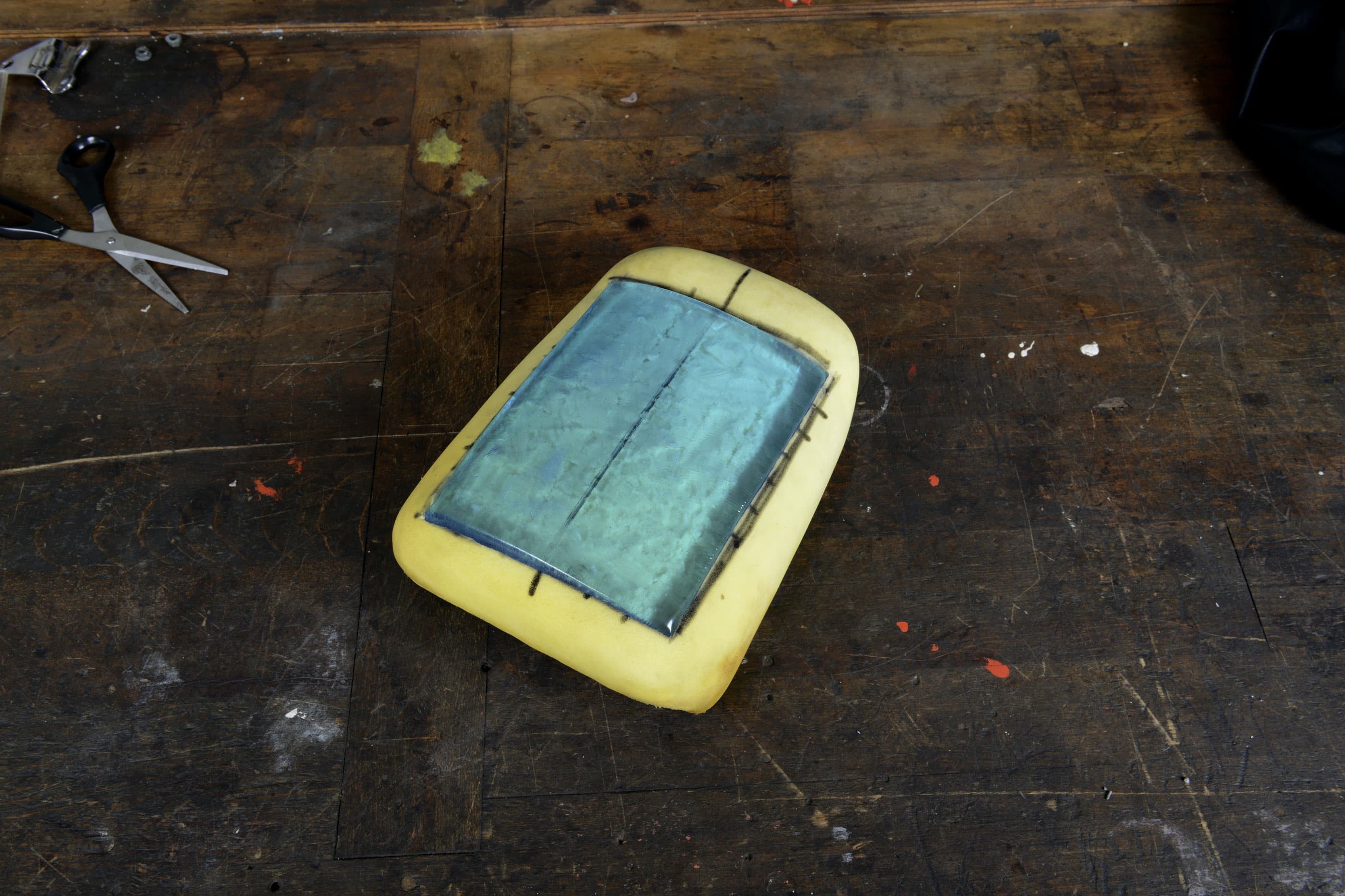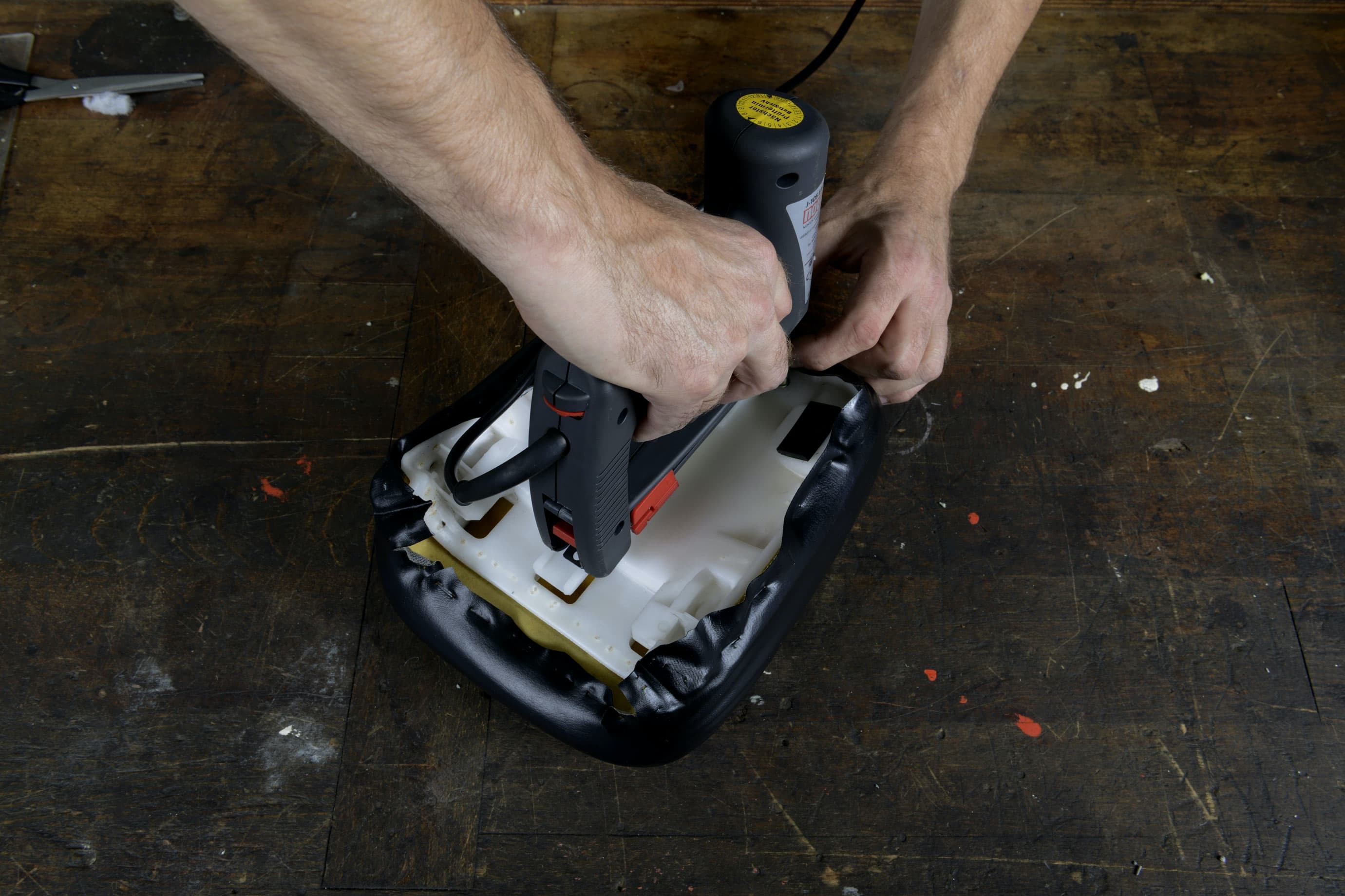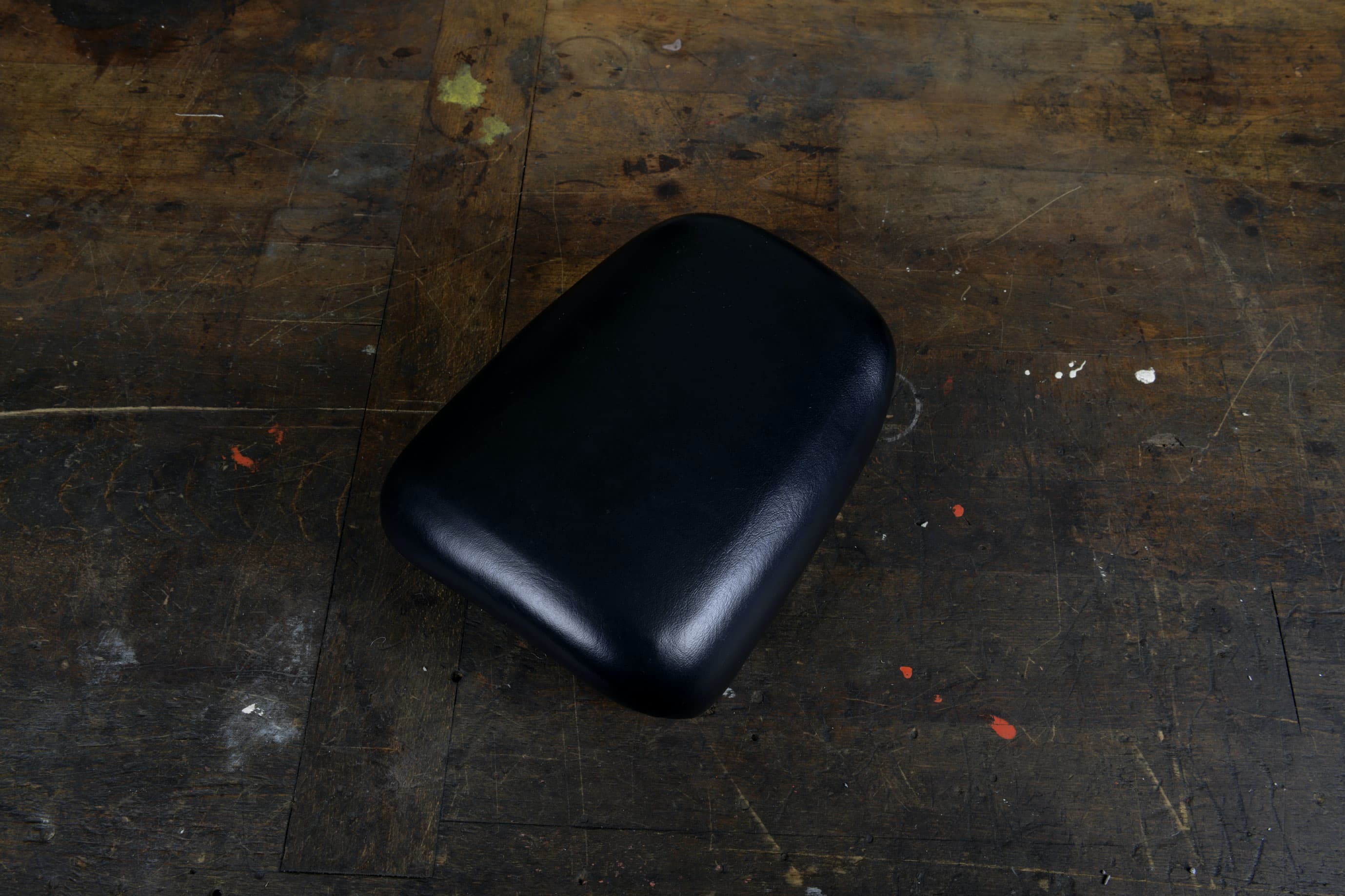Fitting a gel pad in your seat
Do you find that the longer you ride your motorbike, the more saddle-sore you feel? Well, it doesn’t have to be like that! What you need is the gel seat pad, complete with installation instructions.

- Installing a gel seat pad – now let's get started
- 01 – First remove the cover
- 02 – Mark a centre line
- 03 – Decide the position
- 04 – Mark the outline
- 05 – Cut the lines for the recess
- 06 – Cut out the foam
- 07 – Flat, level recess
- 08 – Gel pad inserted
- 09 – Cover with lining fabric
- 10 – Refit the seat cover
- 11 – Fix the cover
- 12 – Check the fit
Equipping your seat with a gel pad will make a huge difference to your comfort. In fact, long days in the saddle will become a real pleasure. No worry about your seat cushion pressing through to the seat pan underneath, and no numbness or muscle cramps in your buttocks. You can try it out with a “test sitting” at many Louis stores. Or you can simply go for it. By the way, you won't need to change your seat cover when you fit a gel pad.
Important: This job does take a little time and patience, and you need to be reasonably handy at doing upholstery. If you’ve never done anything like this before, the instructions below should be a big help. You could also ask a fellow biker for some assistance.
Installing a gel seat pad – now let's get started

Step 1: First remove the cover
01 – First remove the cover
Remove your seat and give it a clean. Carefully detach the seat cover from the base. It's usually held by staples, which you can lever out with a screwdriver, pliers or a professional staple remover tool. If it’s riveted, you will need to carefully drill out the rivets. You can then pull the cover off the seat.

Step 2: Mark a centre line
02 – Mark a centre line
Now mark a centre line on the seat using a flexible ruler. The best way to do this is to measure the centre of the seat at several points along the cushion and mark it with a dot, then join up the dots with the ruler.

Step 3: Mark a line and decide the position of the gel pad
03 – Decide the position
Do the same on the gel pad. Now you also need to decide how far toward the front or rear of the saddle you want to position the gel pad so that your “seat bones” will rest fully on the gel pad in your normal riding position.

Step 4: Mark the outline
04 – Mark the outline
Align the pad using the centre line. It should only rest on the flat surface of the seat, and should not extend over the curving edges. If necessary, the gel pad can be trimmed to size with scissors. Always cut symmetrically either side of the centre line. The scissors should be lubricated with silicone spray to stop them from sticking to the gel. Keep the scissors at right angles to the gel pad as you cut.
Once you've cut the gel pad to size, place it centrally on the seat again in the desired position and draw around it accurately, making sure that it doesn't move.

Step 5: Cut the recess for the gel pad in the seat foam
05 – Cut the lines for the recess
In preparation for cutting the recess in the foam, you now need to mark out a chequerboard pattern within the outline you have just drawn (the lines should be approx. 3 cm apart). Then take a utility knife and extend the blade out of the handle to a length equivalent to the thickness of the gel pad, so approx. 15 mm. Cut vertically into the foam to exactly this depth along the marked lines without pressing too hard to avoid sinking into the foam.

Step 6: Cut out foam to make the recess
06 – Cut out the foam
It’s difficult to cut foam with a single, continuous action. Instead, it’s better to press the blade vertically into the foam step by step along the lines. After a couple of cuts, make a connecting cut etc.
Once you've cut along all the lines in the chequerboard pattern with the utility knife, take a sharp razor blade scraper (or else use the utility knife again), lift the edge of a chequerboard segment slightly with your thumb and forefinger (index finger), and cut it out leaving a flat surface. On your first attempt, it’s better to cut too shallow rather than too deep. After you've cut the first few segments, the rest will be easier.

Step 7: This is how a flat, level recess should look
07 – Flat, level recess
The aim is to cut out the recess as flat and level as possible so that when you insert the gel pad, it sits flush with the foam. It should neither stand proud nor be below the surface of the foam. This job takes a little patience.

Step 8: Recess with gel pad inserted
08 – Gel pad inserted
Now lay the gel pad in the recess to see whether you need to do any more cutting.

Step 9: Fix the pad and cover with lining fabric
09 – Cover with lining fabric
Before finally assembling the seat, cover it with a thin layer of foam (scrim foam) or a lining fabric. Then test-fit the seat cover, pulling it taut. The gel pad should not cause a bulge in the cover. If it does, you need to deepen the recess in the foam. Once you're satisfied with the result, you can fix the gel pad in the recess by removing the protective film from the bottom surface.
The protective film on the top surface of the gel pad should remain in place. Stretch the thin foam or lining fabric over the seat and possibly fix it down with spray adhesive. Cut off any projecting fabric or foam with scissors. If the seat cover is not rainproof (e.g. due to darts/tucks or because the material itself is not waterproof), you should first cover the seat with plastic sheet (a section cut from a tarpaulin will also do the job) to prevent water penetration).

Step 10: Align the cover accurately and symmetrically
10 – Refit the seat cover
The next step is to refit the seat cover, and for this you again need to be quite accurate. Make sure the cover is symmetrically aligned. A second pair of hands is useful for this job.

Step 11: Fix the cover back on the seat
11 – Fix the cover
Turn the seat over and fix the cover to the base plate again, starting at the centre of the rear end (with a plastic seat pan, for example, use a powerful electric staple gun and staples no longer than the ones you removed). Work from the centre outwards, alternately to the left and right until the cover is completely secured at the rear.
Then fix the cover in the same way at the front, keeping the material taut by pulling it gently and evenly. Be careful not to twist or distort the cover. Likewise, the rear edge of the cover must stay straight and must not slip forwards. If the seat has a curvature or ridge, the cover will not lie flat there at first, but this will sort itself out when you pull the material tight at the sides. Here again, you start at the rear, and work forwards step by step, tensioning the left and right sides alternately. Make sure you tension the material evenly. More useful tips and detailed information can be found in our DIY tip Seat.

Step 12: Cover looking good? Happy Biking!
12 – Check the fit
Turn the seat over frequently to check that the cover is correctly positioned. When the job is finished, stand back and admire what you’ve just achieved with your own hands - a super-comfortable seat. You can be rightly proud, and can look forward to your next long tour being even more enjoyable.
The Louis Technical Centre
If you have a technical question about your motorbike, please contact our Technical Centre, where they have endless experience, reference books and contacts.
Please note!
These tips for DIY mechanics contain general recommendations that may not apply to all vehicles or all individual components. As local conditions may vary considerably, we are unable to guarantee the correctness of information in these tips for DIY mechanics.
Thank you for your understanding.



